15 Ways to Say Thank You in German: A Complete Guide

Written by
Ernest Bio Bogore

Reviewed by
Ibrahim Litinine
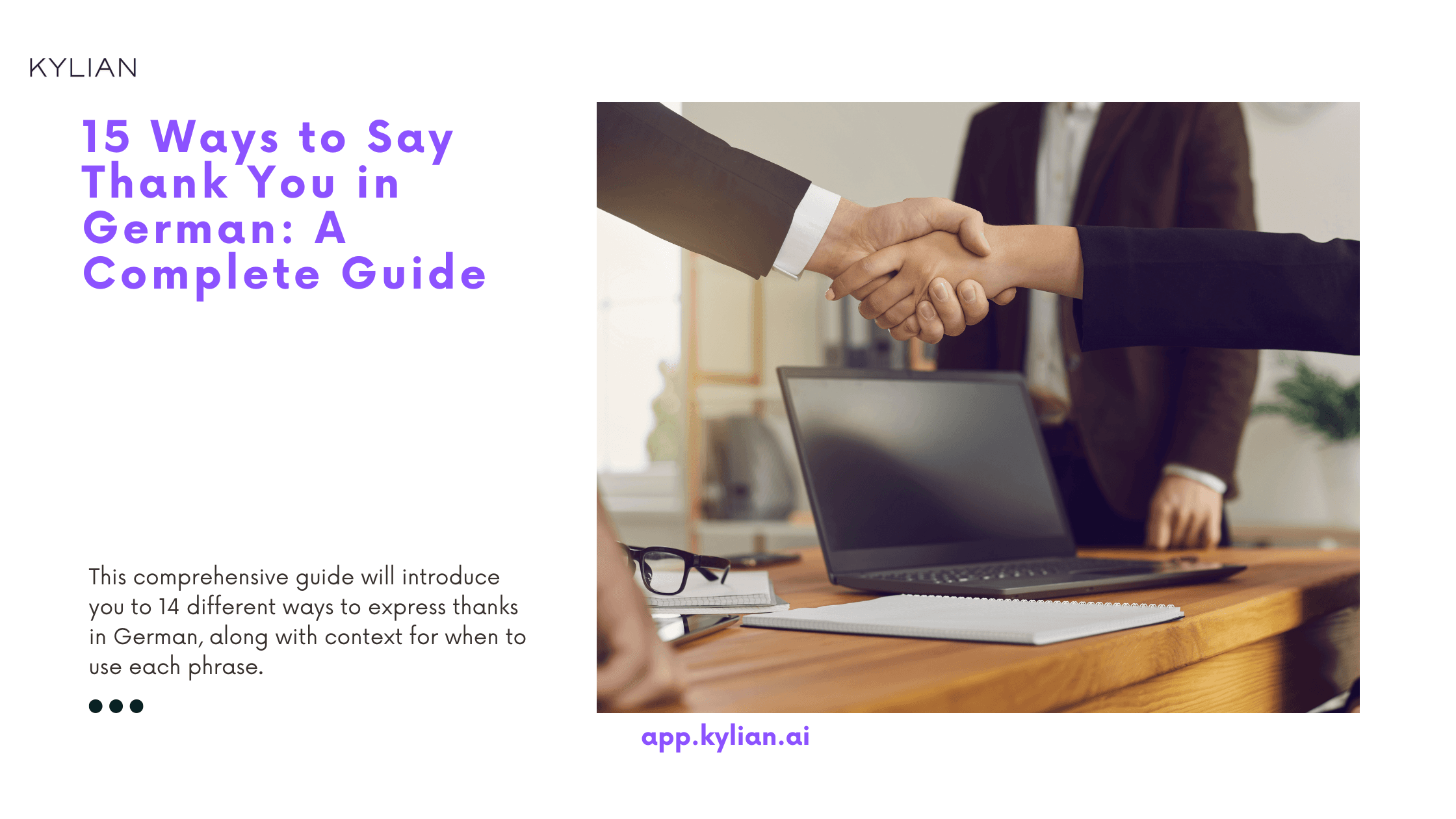
Expressing gratitude is a fundamental aspect of effective communication in any language. Whether you're traveling through German-speaking countries, studying the language, or simply expanding your linguistic repertoire, knowing how to say "thank you" properly will serve you well in countless situations. German culture places significant emphasis on politeness, making expressions of gratitude particularly important.
This comprehensive guide will introduce you to 14 different ways to express thanks in German, along with context for when to use each phrase. We'll also explore how to respond when someone thanks you, ensuring you're prepared for any social interaction.
The Basic Expression: "Danke"
The most straightforward way to say "thank you" in German is simply "danke." This versatile expression works in virtually any casual setting and forms the foundation for many other gratitude phrases in the German language.
Just as English speakers have numerous ways to express thanks beyond a simple "thank you," German offers a rich variety of gratitude expressions suitable for different contexts and levels of formality.
14 Ways to Express Gratitude in German
1. Danke schön ("Thank you very much")
"Danke schön" represents a slightly more formal version of "danke," equivalent to saying "thank you very much" in English. This phrase works well in everyday situations when you want to express a higher degree of appreciation.
You might use "danke schön" when:
- A stranger holds the door open for you
- A waiter brings your meal at a restaurant
- Someone answers a question you've asked
Example: Können Sie mir sagen, wo der Bahnhof ist? – Er ist zwei Straßen weiter. – Danke schön! Translation: Can you tell me where the train station is? – It's two streets over. – Thank you very much!
Unlike some other expressions, "danke schön" functions as a complete statement on its own and isn't typically followed by specifics about what you're thanking someone for.
2. Danke sehr ("Thank you very much")
"Danke sehr" serves essentially the same purpose as "danke schön" and can be used interchangeably in most situations. Though slightly more formal than "danke schön," both expressions work well in everyday interactions when you want to convey stronger appreciation than a simple "danke."
Appropriate scenarios for "danke sehr" include:
- When someone gives you directions
- After receiving assistance with a small task
- When acknowledging a service
Example: Können Sie mir bitte mit dem Gepäck helfen? – Natürlich. – Danke sehr! Translation: Could you please help me with the luggage? – Of course. – Thank you very much!
3. Vielen Dank ("Many thanks")
"Vielen Dank" conveys a more heartfelt gratitude than the previous expressions. This phrase works particularly well when receiving gifts or substantial assistance. It communicates a deeper level of appreciation and is appropriate in both formal and informal settings.
You might use "vielen Dank" when:
- Receiving a meaningful gift
- After someone has gone out of their way to help you
- Acknowledging significant support
Example: Vielen Dank für Ihre Hilfe beim Umzug. Das hat mir sehr geholfen. Translation: Many thanks for your help with moving. That helped me tremendously.
4. Danke für... ("Thank you for...")
When you want to express gratitude for something specific, "Danke für..." provides the perfect framework. This construction allows you to acknowledge precisely what you're thankful for, making your appreciation more personalized.
Common uses include:
- Thanking someone for a specific gift
- Acknowledging a particular service or favor
- Expressing appreciation for someone's time
Example: Danke für den Kaffee! Genau was ich jetzt brauche. Translation: Thank you for the coffee! Exactly what I need right now.
5. Herzlichen Dank ("Thank you kindly/heartfelt thanks")
"Herzlichen Dank" communicates warm, heartfelt gratitude. With "Herz" meaning "heart" in German, this expression conveys that your thanks come genuinely from the heart rather than from mere social obligation.
In written communication, some Germans creatively replace the first letters with a heart symbol: "♥lichen Dank!"
This expression works well for:
- Thanking someone for emotional support
- Acknowledging a particularly thoughtful gesture
- Expressing deep appreciation in formal correspondence
Example: Herzlichen Dank für deine Unterstützung während meiner schwierigen Zeit. Translation: Heartfelt thanks for your support during my difficult time.
6. Besten Dank ("Best thanks")
When you want to express significant gratitude without the emotional intensity of "herzlichen Dank," "besten Dank" offers an excellent alternative. This expression conveys "best thanks" or "thank you very much" in a somewhat more reserved manner.
"Besten Dank" works particularly well in:
- Professional correspondence
- Formal social situations
- Acknowledging assistance from service providers
Example: Besten Dank für die schnelle Bearbeitung meiner Anfrage. Translation: Best thanks for the prompt processing of my request.
7. Ich danke Ihnen/dir ("I give you my thanks")
"Ich danke Ihnen" represents a formal, explicit expression of gratitude. The use of "Ihnen" (formal "you") makes this appropriate for situations requiring particular respect or formality. For informal situations with friends or family, substitute "dir" (informal "you") instead.
This construction works well when:
- Thanking someone in a professional context
- Expressing gratitude to elders or authority figures
- Acknowledging significant assistance
Example: Ich danke Ihnen für Ihre ausführliche Erklärung. Jetzt verstehe ich das Problem besser. Translation: I thank you for your detailed explanation. Now I understand the problem better.
For friends or family: "Ich danke dir für deine Hilfe."
8. Ich bin Ihnen/dir sehr dankbar ("I am very grateful to you")
This expression communicates profound gratitude and often initiates a longer explanation of why you're thankful. Like the previous phrase, use "Ihnen" in formal contexts and "dir" in informal ones.
"Ich bin Ihnen/dir sehr dankbar" works well when:
- Someone has provided extraordinary help
- You want to emphasize the significance of someone's assistance
- Beginning a more extended expression of appreciation
Example: Ich bin dir sehr dankbar für deine Unterstützung beim Projektabschluss. Ohne deine Hilfe hätte ich die Frist nicht einhalten können. Translation: I am very grateful for your support in completing the project. Without your help, I couldn't have met the deadline.
9. Danke, sehr aufmerksam ("Thank you, that's very kind of you")
When someone shows thoughtfulness by anticipating your needs without being asked, "Danke, sehr aufmerksam" acknowledges both their help and their consideration. You can also simply say "sehr aufmerksam" on its own.
This expression works well when:
- Someone performs an unrequested helpful act
- A person shows particular attentiveness to your situation
- Acknowledging someone's proactive assistance
Example: Your colleague brings you coffee just how you like it without being asked: Danke, sehr aufmerksam! Translation: Thank you, that's very thoughtful of you!
10. Tausend Dank ("A thousand thanks")
"Tausend Dank" expresses enthusiastic gratitude, similar to saying "thanks a million" in English. This informal expression works best among friends and acquaintances when someone has provided meaningful assistance.
You might use "Tausend Dank" when:
- A friend goes above and beyond to help you
- Someone has saved you from a difficult situation
- Expressing enthusiastic appreciation for significant assistance
Example: Tausend Dank für deine Hilfe bei der Autopanne gestern. Du hast meinen Tag gerettet! Translation: A thousand thanks for your help with the car breakdown yesterday. You saved my day!
11. Danke, gleichfalls ("Thank you, likewise")
When someone expresses good wishes or kindness toward you and you want to return the sentiment, "Danke, gleichfalls" provides the perfect response. This versatile phrase works in both formal and informal settings.
Common situations include:
- Responding to well-wishes
- Returning compliments
- Reciprocating kind sentiments
Example: When a colleague says "Schönes Wochenende!" (Have a nice weekend!), you might respond: Danke, gleichfalls! Translation: Thank you, same to you!
12. Vielen Dank im Voraus ("Thank you in advance")
"Vielen Dank im Voraus" expresses gratitude for something that hasn't happened yet. This phrase appears primarily in written communication—especially emails and formal letters—rather than in spoken German.
Appropriate uses include:
- At the end of a request email
- When asking for assistance in formal correspondence
- Expressing appreciation for anticipated help
Example: Ich freue mich auf Ihre Rückmeldung zu meiner Bewerbung. Vielen Dank im Voraus. Translation: I look forward to your feedback regarding my application. Thank you in advance.
13. Ich kann dir/Ihnen gar nicht genug danken ("I cannot thank you enough")
For situations where someone's assistance has made a profound difference in your life, "Ich kann dir/Ihnen gar nicht genug danken" expresses that your gratitude exceeds what words can convey. Use "dir" for informal situations and "Ihnen" for formal ones.
This expression is appropriate when:
- Someone has helped you through a major life challenge
- A person has provided assistance of extraordinary value
- You want to emphasize the depth of your appreciation
Example: Ich kann dir gar nicht genug danken für deine Hilfe bei der Jobsuche. Diese neue Stelle wird mein Leben verändern. Translation: I cannot thank you enough for your help with the job search. This new position will change my life.
14. Das wäre doch nicht nötig gewesen ("You didn't have to do that")
When someone performs an unexpected kindness or gives an unexpected gift, "Das wäre doch nicht nötig gewesen" communicates both gratitude and slight surprise. This phrase acknowledges that someone has gone beyond what was required or expected.
You might use this expression when:
- Receiving an unexpected gift
- Someone has performed a favor you didn't request
- Acknowledging effort that exceeded expectations
Example: When a neighbor unexpectedly clears snow from your driveway: Das wäre doch nicht nötig gewesen, aber vielen Dank! Translation: You didn't have to do that, but thank you very much!
15. Schönen Dank ("Nice thanks")
"Schönen Dank" offers yet another variation on expressing gratitude, with a warmth that falls between casual and formal. This expression works well in everyday situations when you want to sound appreciative without being overly formal or effusive.
Appropriate scenarios include:
- Thanking store clerks
- Acknowledging small favors
- Expressing appreciation in casual social settings
Example: Schönen Dank für die Information. Das hilft mir weiter. Translation: Nice thanks for the information. That helps me further.
How to Respond to "Thank You" in German
Knowing how to respond when someone thanks you completes the circle of polite communication. German offers several ways to say "you're welcome," each with nuances appropriate for different situations.
Bitte ("You're welcome")
The standard response to "danke" is simply "bitte." This versatile word serves multiple functions in German—it means both "please" and "you're welcome," depending on context.
Interestingly, this dual meaning sometimes leads German speakers to respond with "please" instead of "you're welcome" when speaking English.
Bitte schön/Bitte sehr ("You're very welcome")
When someone thanks you with "Danke schön" or "Danke sehr," the appropriate response matches their level of formality: "Bitte schön" or "Bitte sehr." These phrases convey "you're very welcome" and maintain the politeness level established by the initial thanks.
Gerne geschehen ("My pleasure")
"Gerne geschehen" communicates that helping was a pleasure rather than an inconvenience. This phrase works well when you want to emphasize that you were happy to assist.
Jederzeit ("Any time")
"Jederzeit" indicates that you would willingly help again in the future. This friendly response works in both formal and informal situations and conveys openness to future assistance.
Kein Problem ("No problem")
"Kein Problem" reassures someone that helping them caused no inconvenience. This casual response works particularly well when someone might feel they've imposed on you.
Cultural Context: The Importance of Gratitude in German Society
German culture places high value on politeness and clear communication. Expressing thanks appropriately isn't merely a social nicety—it's an expected part of functional social interaction. Learning these various expressions of gratitude will help you navigate German social customs more effectively and create positive impressions in both personal and professional contexts.
Understanding when to use formal versus informal expressions also demonstrates cultural awareness and respect for German social hierarchies. While younger Germans may be more relaxed about formality in some contexts, showing appropriate respect through language remains important in professional and intergenerational interactions.
Practical Tips for Expressing Gratitude in German
- Match the level of formality to your relationship with the person you're thanking
- For service providers and strangers, err on the side of more formal expressions
- Pay attention to whether others use "du" (informal) or "Sie" (formal) with you, and match your gratitude expressions accordingly
- Remember that brief eye contact while saying thank you is customary in German culture
- In written communication, expressions of thanks typically appear at the end of emails or letters
Learn Any Language with Kylian AI
Private language lessons are expensive. Paying between 15 and 50 euros per lesson isn’t realistic for most people—especially when dozens of sessions are needed to see real progress.
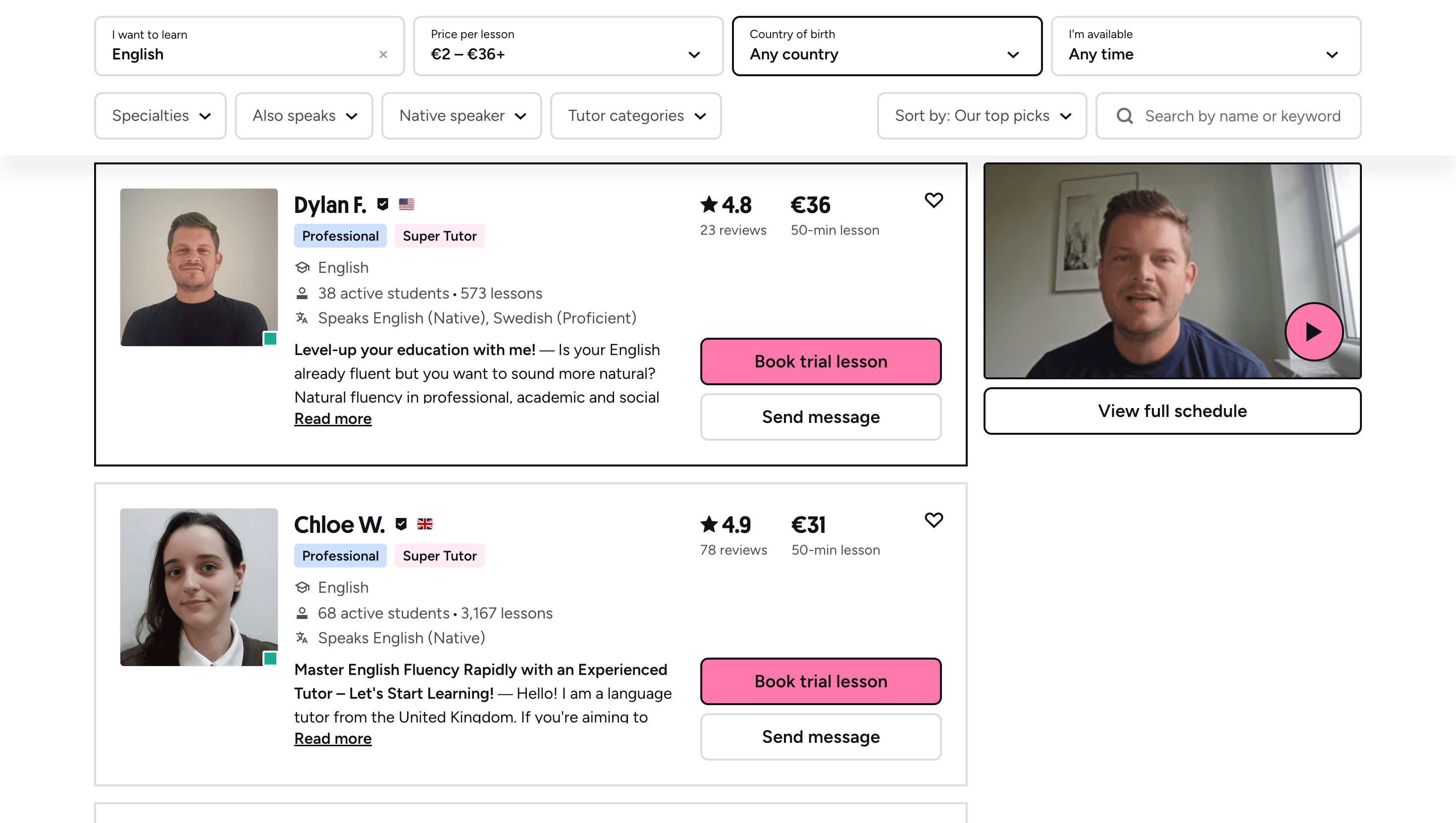
Many learners give up on language learning due to these high costs, missing out on valuable professional and personal opportunities.
That’s why we created Kylian: to make language learning accessible to everyone and help people master a foreign language without breaking the bank.
To get started, just tell Kylian which language you want to learn and what your native language is
Tired of teachers who don’t understand your specific struggles as a French speaker? Kylian’s advantage lies in its ability to teach any language using your native tongue as the foundation.
Unlike generic apps that offer the same content to everyone, Kylian explains concepts in your native language (French) and switches to the target language when necessary—perfectly adapting to your level and needs.
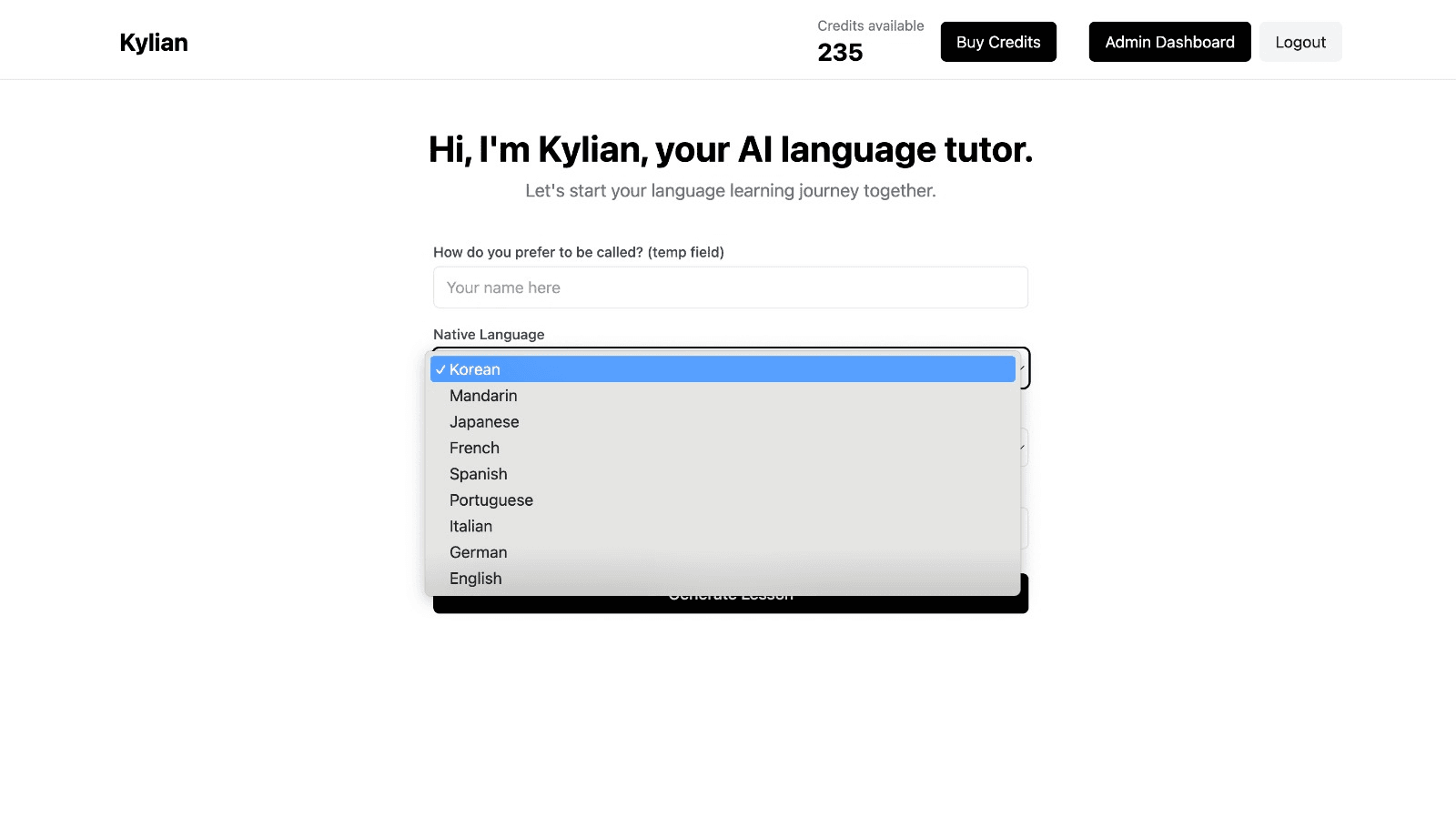
This personalization removes the frustration and confusion that are so common in traditional language learning.
Choose a specific topic you want to learn
Frustrated by language lessons that never cover exactly what you need? Kylian can teach you any aspect of a language—from pronunciation to advanced grammar—by focusing on your specific goals.
Avoid vague requests like “How can I improve my accent?” and be precise: “How do I pronounce the R like a native English speaker?” or “How do I conjugate the verb ‘to be’ in the present tense?”
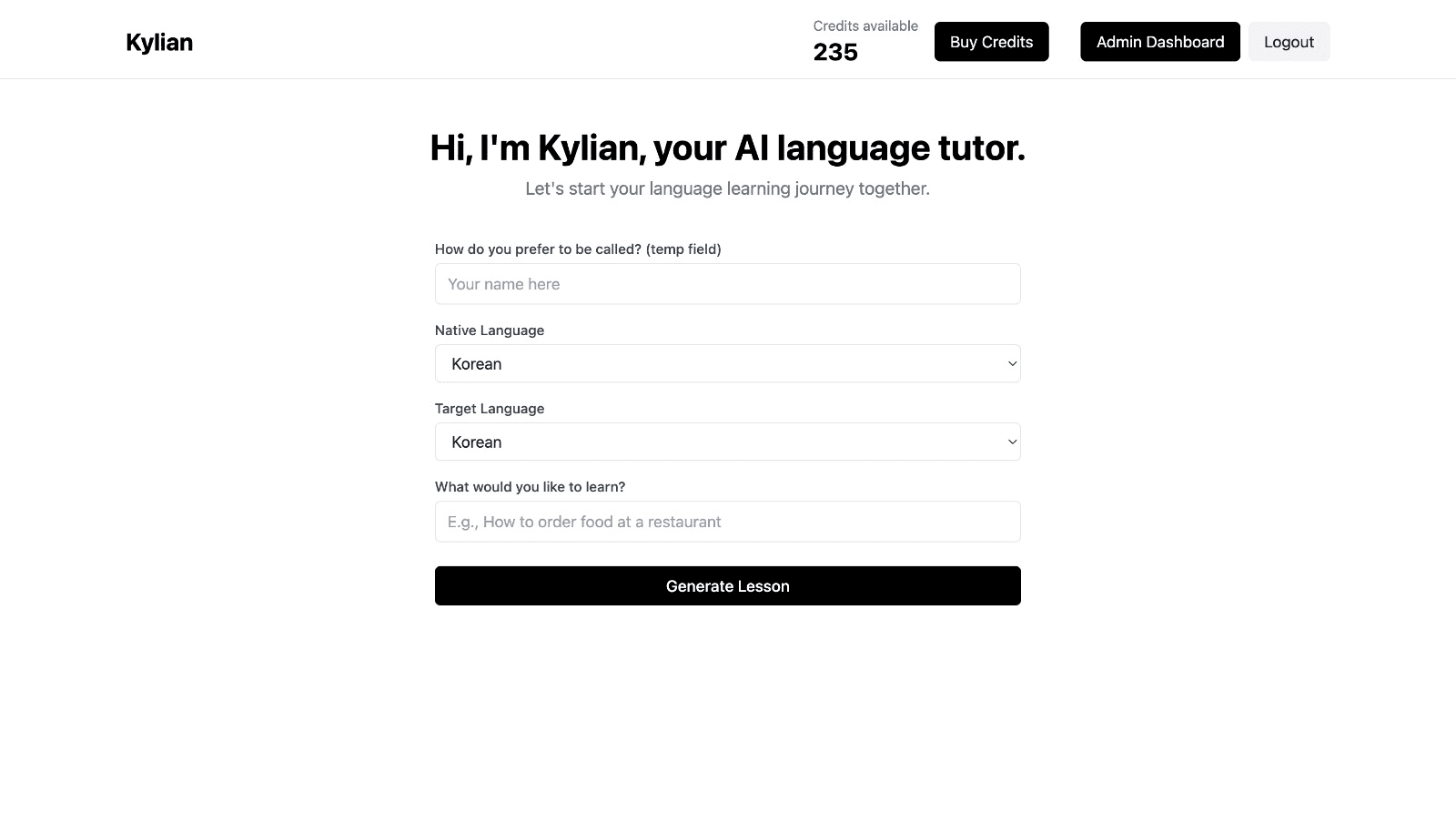
With Kylian, you’ll never again pay for irrelevant content or feel embarrassed asking “too basic” questions to a teacher. Your learning plan is entirely personalized.
Once you’ve chosen your topic, just hit the “Generate a Lesson” button, and within seconds, you’ll get a lesson designed exclusively for you.
Join the room to begin your lesson
The session feels like a one-on-one language class with a human tutor—but without the high price or time constraints.
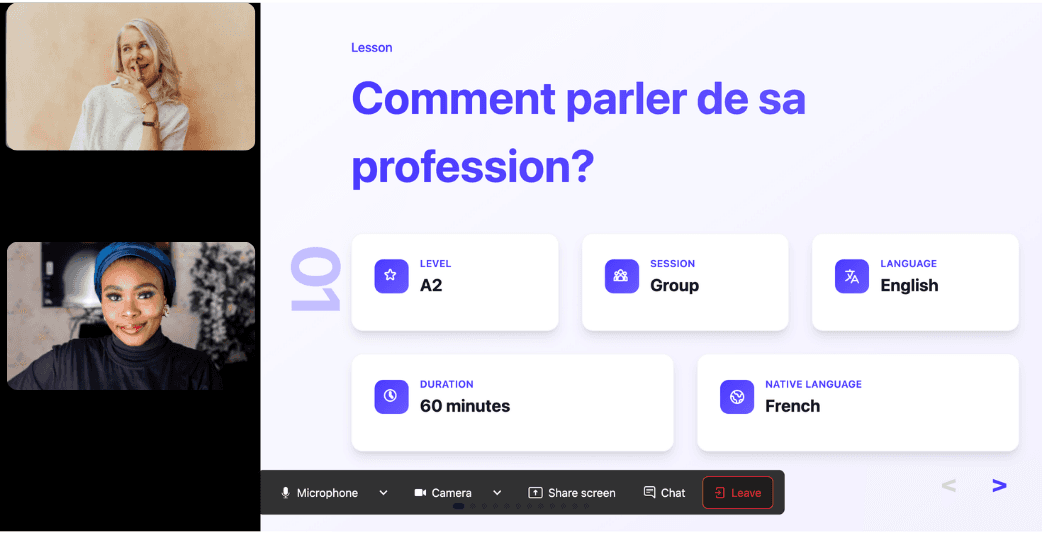
In a 25-minute lesson, Kylian teaches exactly what you need to know about your chosen topic: the nuances that textbooks never explain, key cultural differences between French and your target language, grammar rules, and much more.
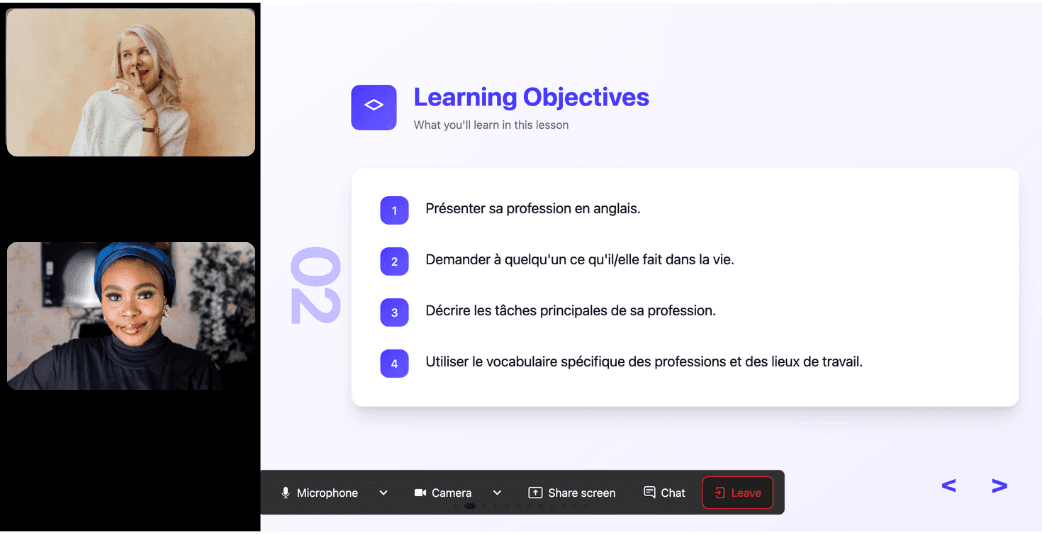
Ever felt frustrated trying to keep up with a native-speaking teacher, or embarrassed to ask for something to be repeated? With Kylian, that problem disappears. It switches intelligently between French and the target language depending on your level, helping you understand every concept at your own pace.
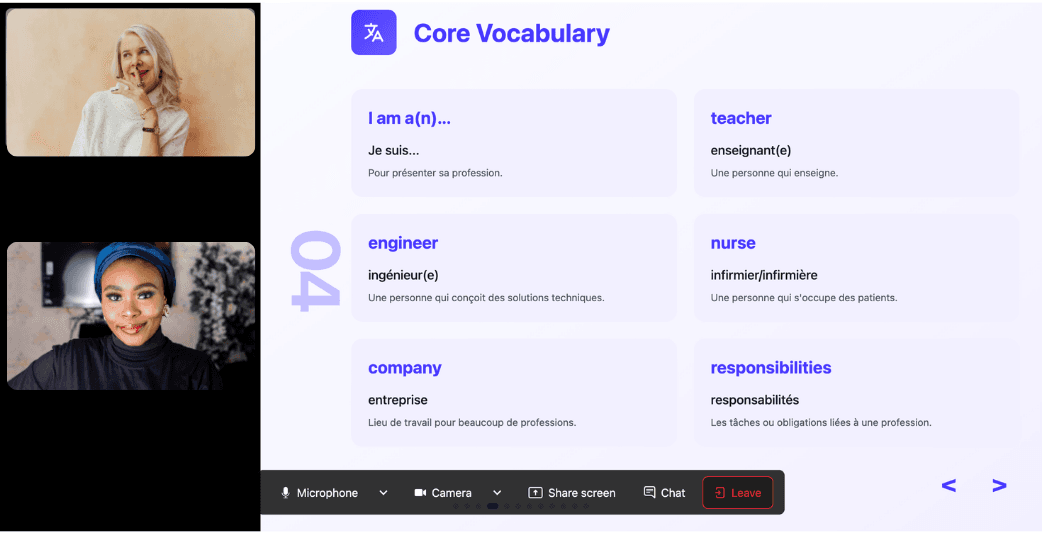
During the lesson, Kylian uses role-plays, real-life examples, and adapts to your learning style. Didn’t understand something? No problem—you can pause Kylian anytime to ask for clarification, without fear of being judged.
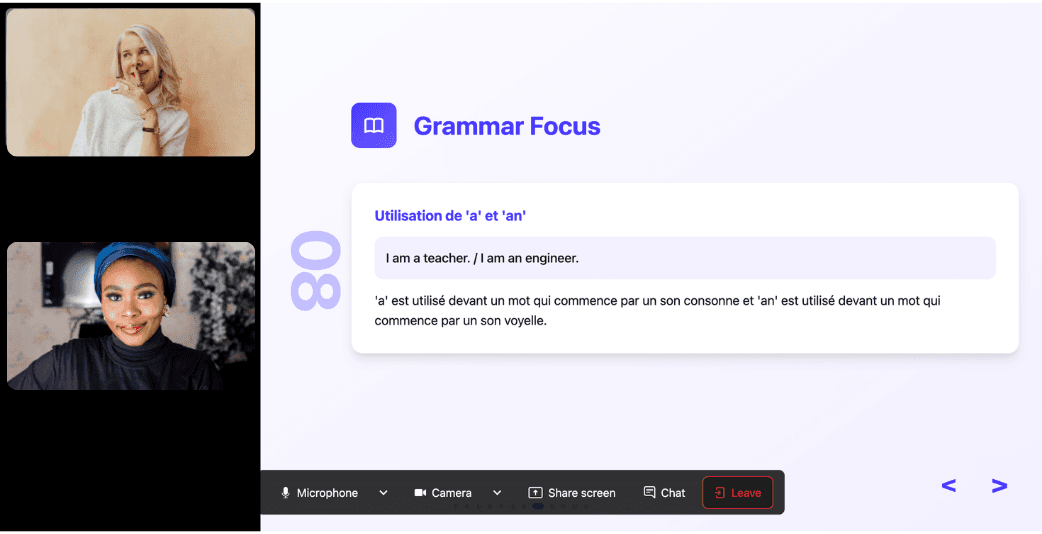
Ask all the questions you want, repeat sections if needed, and customize your learning experience in ways traditional teachers and generic apps simply can’t match.
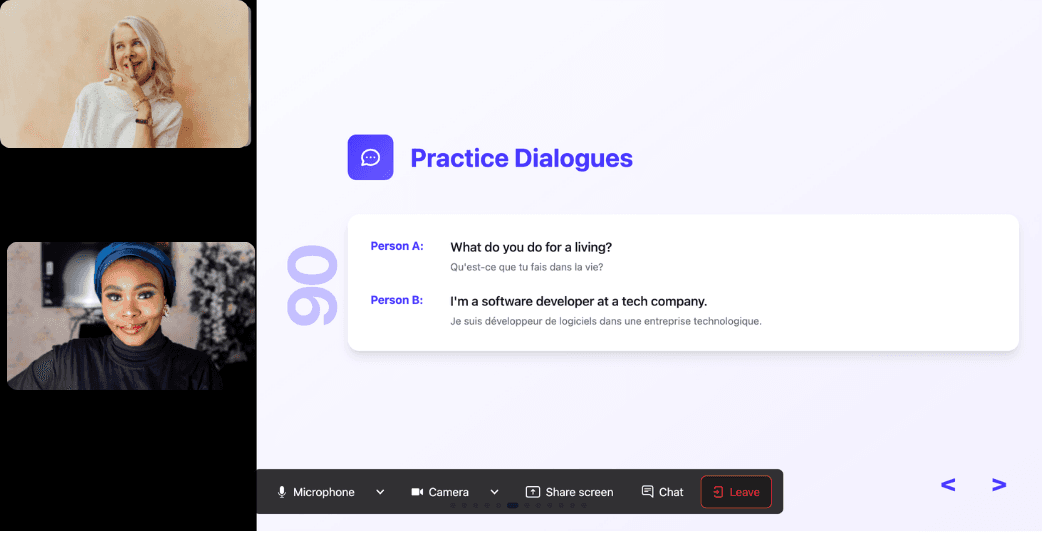
With 24/7 access at a fraction of the cost of private lessons, Kylian removes all the barriers that have kept you from mastering the language you’ve always wanted to learn.
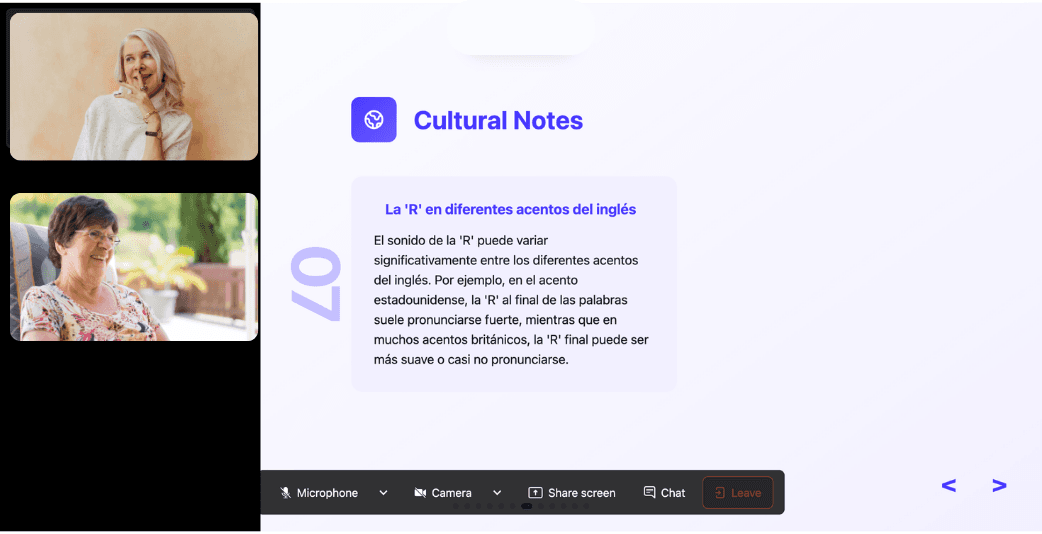
Similar Content You Might Want To Read

Master Italian Verb Conjugation: Regular & Irregular Verbs
Mastering Italian verb conjugation unlocks genuine expression and cultural connection, transforming you from a basic communicator to a fluid conversationalist. Whether you're just beginning your language journey, refining existing skills, or simply curious about the linguistic mechanics of this beautiful language, understanding how to properly conjugate Italian verbs forms the foundation of meaningful communication.

Spanish Irregular Verbs: Essential Conjugation Guide
Learning Spanish requires mastering verb conjugation, with irregular verbs presenting a particular challenge for language learners. While regular verbs follow predictable patterns, irregular verbs march to their own beat, requiring dedicated practice and memorization. This comprehensive guide breaks down the essentials of Spanish irregular verbs, providing conjugation charts and practical examples to accelerate your language journey.

How to Master English Phrasal Verbs Fast: Know It All
Why do native English speakers say "I'll figure it out" instead of "I'll solve it"? Why does "break down" mean both mechanical failure and emotional collapse? The answer lies in phrasal verbs—arguably the most challenging yet essential component of English fluency that language learners consistently underestimate. The data is stark: phrasal verbs comprise roughly 30% of all English vocabulary usage in daily conversation, yet most intermediate learners can confidently use fewer than 50 of the most common ones. This gap represents the single greatest barrier between intermediate competency and advanced fluency. More critically, it's the difference between sounding like a textbook and communicating like a native speaker. Phrasal verbs represent combinations of base verbs paired with particles—prepositions or adverbs—that create entirely new meanings unrelated to their individual components. When "run" meets "into," the result isn't about physical movement but unexpected encounters. When "put" combines with "up with," tolerance emerges from seemingly unrelated words. This linguistic phenomenon confuses learners precisely because it defies logical deduction. You cannot reverse-engineer the meaning of "call off" from knowing "call" and "off" independently. This opacity creates a learning challenge that demands systematic understanding rather than intuitive guessing. The significance extends beyond vocabulary expansion. Phrasal verbs carry the informal, conversational tone that characterizes authentic English communication. They bridge the gap between academic English and the language actually spoken in boardrooms, coffee shops, and social gatherings. Mastering them transforms stilted, formal expression into natural, flowing communication.

Master English Past Tenses: Complete Guide
English speakers make over 4 billion past tense errors annually in professional communication alone. This isn't just a statistic—it's a barrier to clear communication that costs businesses credibility and individuals opportunities. The complexity of English past tenses creates confusion even among advanced speakers, yet mastering these forms remains fundamental to effective expression. Past tenses serve as the backbone of storytelling, reporting, and professional discourse. Without precise temporal markers, communication loses its chronological anchor, leaving listeners and readers struggling to piece together sequences of events. The difference between "I was working when you called" and "I worked when you called" fundamentally changes meaning, context, and implied relationships between actions. This guide dissects the four primary past tense constructions that shape English temporal expression: past simple, past continuous, past perfect, and past perfect continuous. Each serves distinct communicative functions that, when properly understood and applied, transform unclear narratives into precise, compelling accounts of past events.

Master the Spanish Subjunctive: Your Complete Guide
The subjunctive mood in Spanish strikes fear into the hearts of many language learners. Yet, this grammatical feature is essential for anyone seeking to express nuanced thoughts in the world's second-most spoken native language. Without it, communicating doubts, possibilities, emotions, and hypothetical situations becomes nearly impossible. This comprehensive guide will demystify the Spanish subjunctive, transforming it from an intimidating obstacle into a powerful tool for authentic expression. With clear explanations, practical strategies, and relevant examples, you'll gain the confidence to use this grammatical structure naturally in conversation. Ready to elevate your Spanish to the next level and communicate with greater precision? Let's begin.

French Pronouns: A Complete Guide for Learners
Are you beginning your journey into French language acquisition? If you've completed a few French lessons and want to solidify your understanding of pronouns, you've arrived at precisely the right resource. This in-depth exploration of French pronouns will examine what they are, why they're fundamental in French communication—both spoken and written—and how to apply them correctly in various contexts. We'll dissect the primary categories of French pronouns—subject pronouns, object pronouns, possessive pronouns, and several others—enabling you to participate in meaningful French conversations with confidence. By the conclusion of this guide, you'll possess a thorough grasp of French pronouns and be prepared to elevate your language proficiency to new heights.